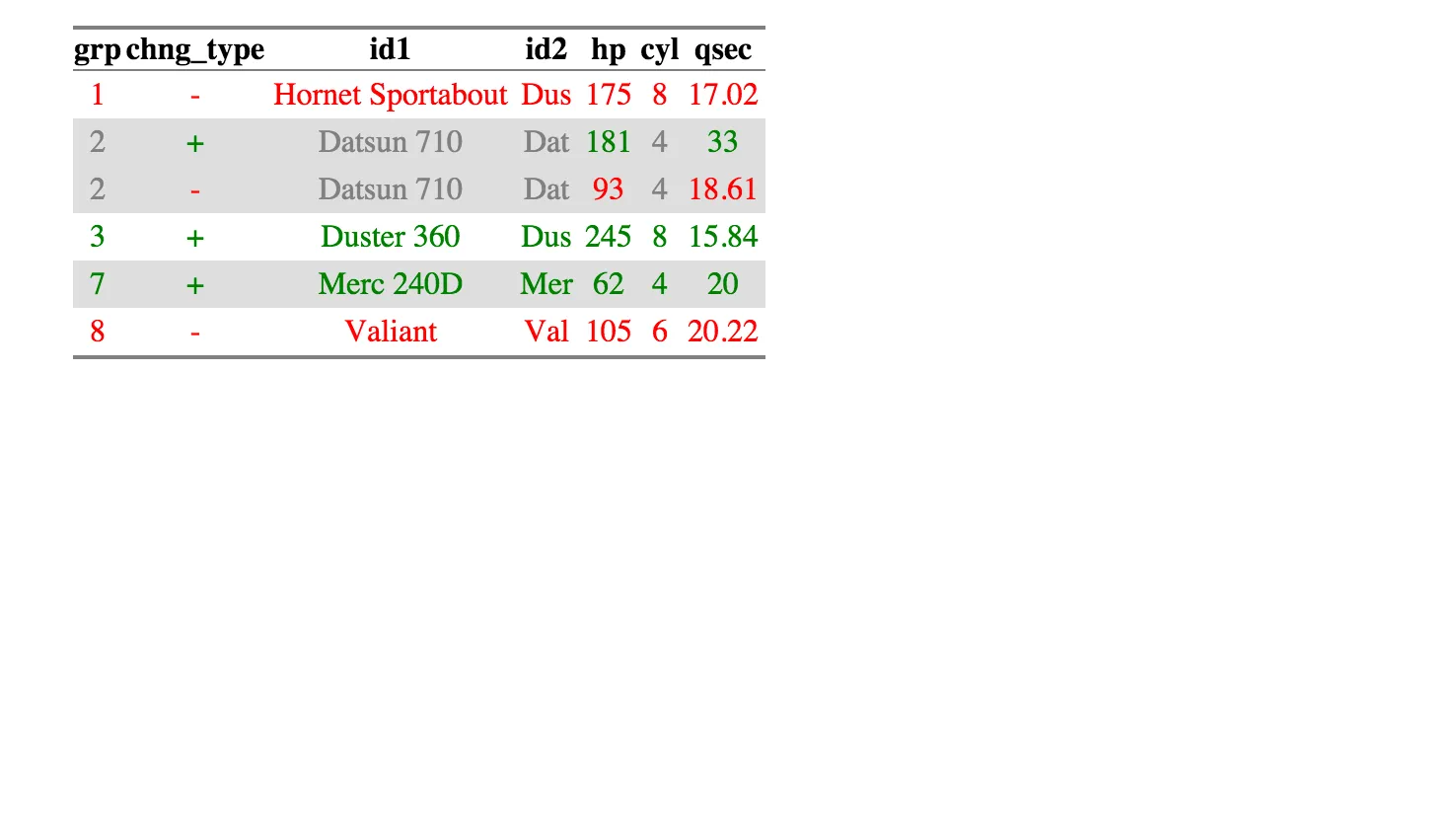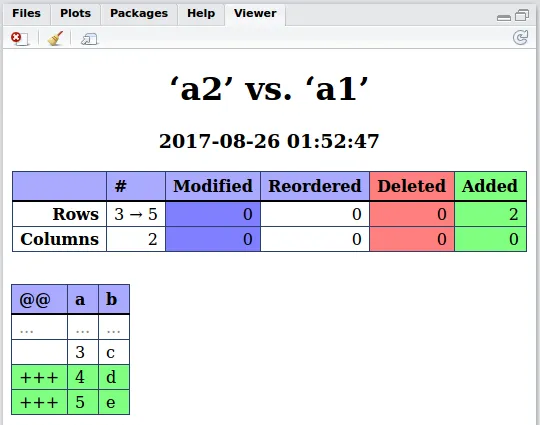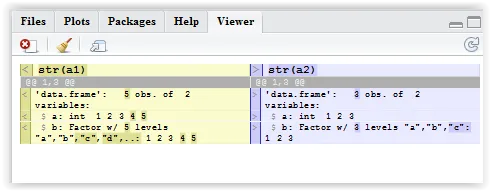我写了一个包(https://github.com/alexsanjoseph/compareDF),因为我遇到了同样的问题。
> df1 <- data.frame(a = 1:5, b=letters[1:5], row = 1:5)
> df2 <- data.frame(a = 1:3, b=letters[1:3], row = 1:3)
> df_compare = compare_df(df1, df2, "row")
> df_compare$comparison_df
row chng_type a b
1 4 + 4 d
2 5 + 5 e
一个更复杂的例子:
library(compareDF)
df1 = data.frame(id1 = c("Mazda RX4", "Mazda RX4 Wag", "Datsun 710",
"Hornet 4 Drive", "Duster 360", "Merc 240D"),
id2 = c("Maz", "Maz", "Dat", "Hor", "Dus", "Mer"),
hp = c(110, 110, 181, 110, 245, 62),
cyl = c(6, 6, 4, 6, 8, 4),
qsec = c(16.46, 17.02, 33.00, 19.44, 15.84, 20.00))
df2 = data.frame(id1 = c("Mazda RX4", "Mazda RX4 Wag", "Datsun 710",
"Hornet 4 Drive", " Hornet Sportabout", "Valiant"),
id2 = c("Maz", "Maz", "Dat", "Hor", "Dus", "Val"),
hp = c(110, 110, 93, 110, 175, 105),
cyl = c(6, 6, 4, 6, 8, 6),
qsec = c(16.46, 17.02, 18.61, 19.44, 17.02, 20.22))
> df_compare$comparison_df
grp chng_type id1 id2 hp cyl qsec
1 1 - Hornet Sportabout Dus 175 8 17.02
2 2 + Datsun 710 Dat 181 4 33.00
3 2 - Datsun 710 Dat 93 4 18.61
4 3 + Duster 360 Dus 245 8 15.84
5 7 + Merc 240D Mer 62 4 20.00
6 8 - Valiant Val 105 6 20.22
该包还具有一个html_output命令,用于快速检查
df_compare$html_output






anti_join和semi_join! - drastega